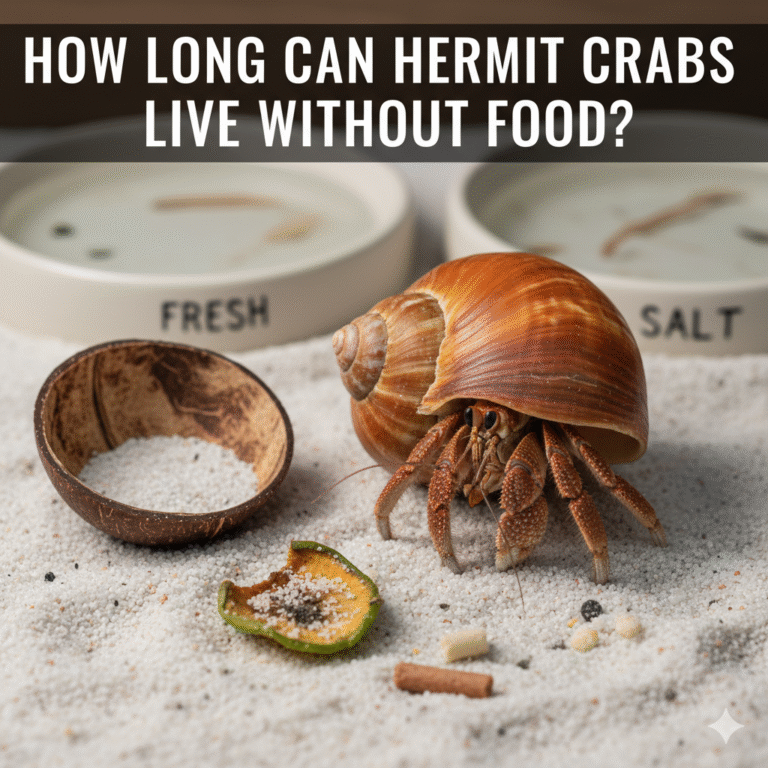How to Set Up a Hermit Crab Tank: Guide for Beginners
If you’ve just brought home a hermit crab, one of the first and most important steps is creating a proper home for them. A well-prepared habitat-often called a crabitat-is the key to keeping hermit crabs healthy, stress-free, and living longer.
But many new crab owners wonder: How do you set up a hermit crab tank correctly? The good news is, with the right setup, you can give your crabs an environment that mimics their natural shoreline homes.
In this guide, we’ll go step by step through everything you need to know: the right tank size, substrate, water, heating, humidity, decorations, and common mistakes to avoid.
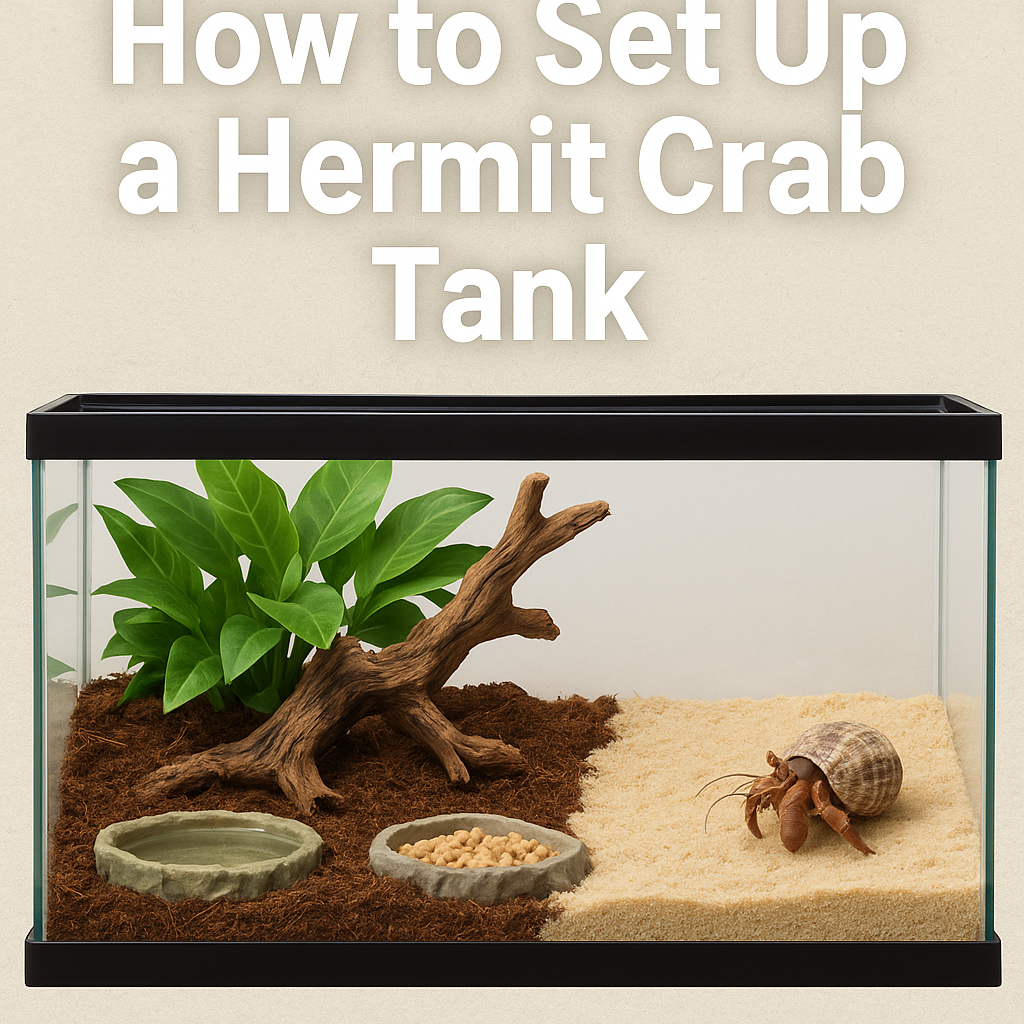
Why a Proper Hermit Crab Tank Setup Matters
Hermit crabs may be small, but they are surprisingly complex creatures. In the wild, they live along tropical coastlines, moving between the beach, shallow tide pools, and shaded burrows underground.
A poor setup-like a dry cage with gravel at the bottom-can cause stress, suffocation, or even death. On the other hand, a proper crabitat allows them to:
- Burrow for molting
- Climb and explore like they do on driftwood in nature
- Access both saltwater and freshwater pools
- Breathe properly thanks to correct humidity
- Change shells when they outgrow their current one
👉 If you’re completely new to crab keeping, check out our full starter guide: Hermit Crab Care for Beginners.
Choosing the Right Tank Size
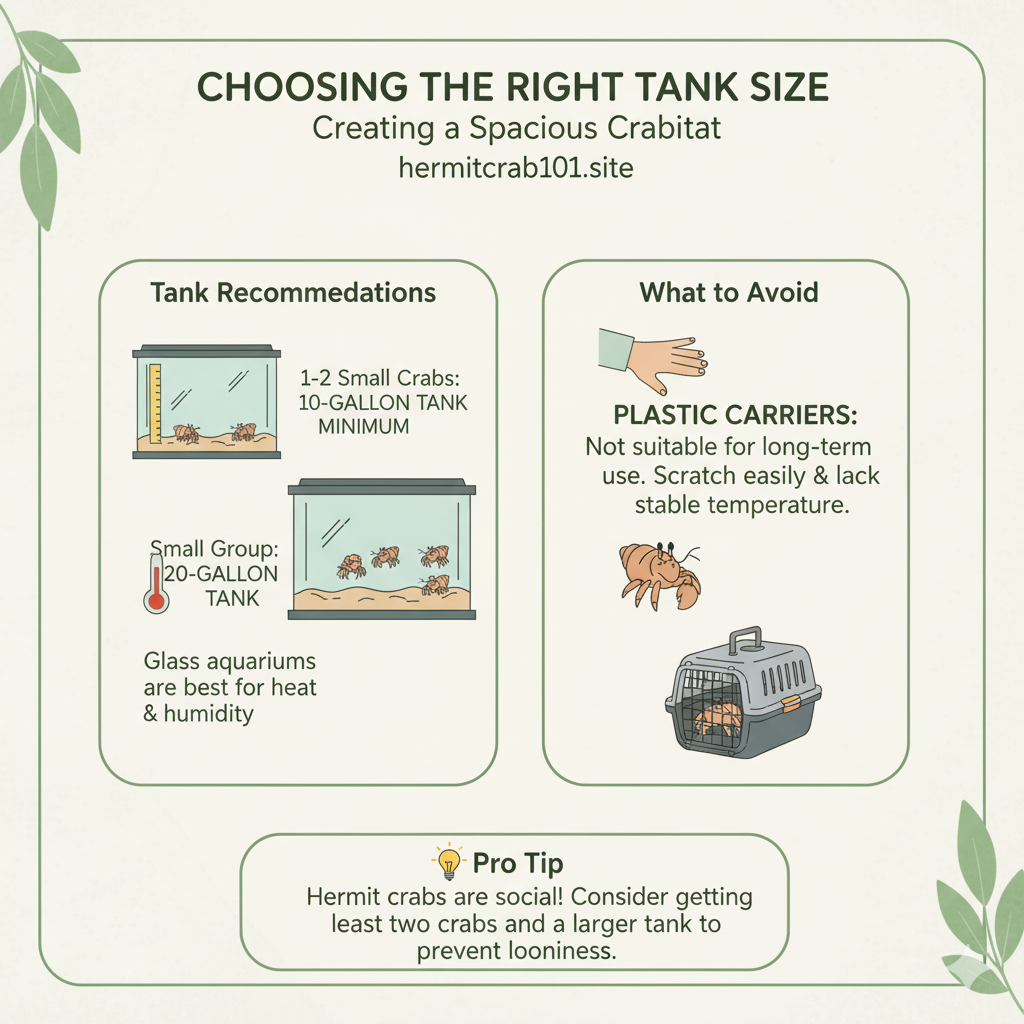
The first step is selecting the tank. Many pet stores recommend tiny plastic carriers, but these are not suitable for long-term housing.
- A 10-gallon tank is the minimum for 1-2 small hermit crabs.
- A 20-gallon tank works better if you plan on keeping a group.
- Glass aquariums are best since they hold heat and humidity well.
Plastic containers may be okay for temporary use, but they scratch easily and don’t provide stable temperature control.
💡 Pro Tip: Hermit crabs are social. Consider getting at least two crabs and a larger tank so they don’t become lonely.
What Do You Put at the Bottom of a Hermit Crab Tank?
The substrate-what covers the bottom of the tank-is the foundation of your hermit crab’s environment. In nature, hermit crabs dig burrows in damp sand to hide and molt. Without proper substrate, they become stressed and may even die during molting.
The best options include:
- Play sand (clean, chemical-free, like children’s sandbox sand)
- Coconut fiber soil (sold as “Eco Earth” or compressed blocks)
- A 50/50 mix of sand and soil, which holds tunnels well
The substrate should be at least 5-6 inches deep, or twice the height of your largest crab. This allows for safe burrowing.
❌ Avoid gravel, wood chips, or calcium sand-they can collapse, mold, or injure your hermit crabs.
Do Hermit Crabs Need Sand or Soil?
Yes-sand or soil is essential. Hermit crabs cannot thrive on bare glass, gravel, or other hard surfaces.
- Sand is closest to their natural beach environment.
- Coconut fiber soil helps retain humidity.
- Mixing both gives your crabs the best of both worlds.
Without a proper substrate, hermit crabs can’t molt correctly-a process they go through every few months to grow. A failed molt is one of the most common causes of death in captivity.
Freshwater and Saltwater Pools
Hermit crabs require access to both freshwater and saltwater at all times. In the wild, they alternate between beach pools and rainwater sources.
- Freshwater pool: Use dechlorinated tap water or bottled spring water.
- Saltwater pool: Use marine aquarium salt mix (not table salt) with dechlorinated water.
Both dishes should be:
- Shallow but deep enough for your crabs to submerge
- Equipped with rocks, shells, or ramps so they can climb out easily
- Changed daily to prevent bacteria build-up
🔗 For more myth-busting information about water and hermit crabs, check out Happy Hermie’s tank setup tips.
Heating and Humidity Control
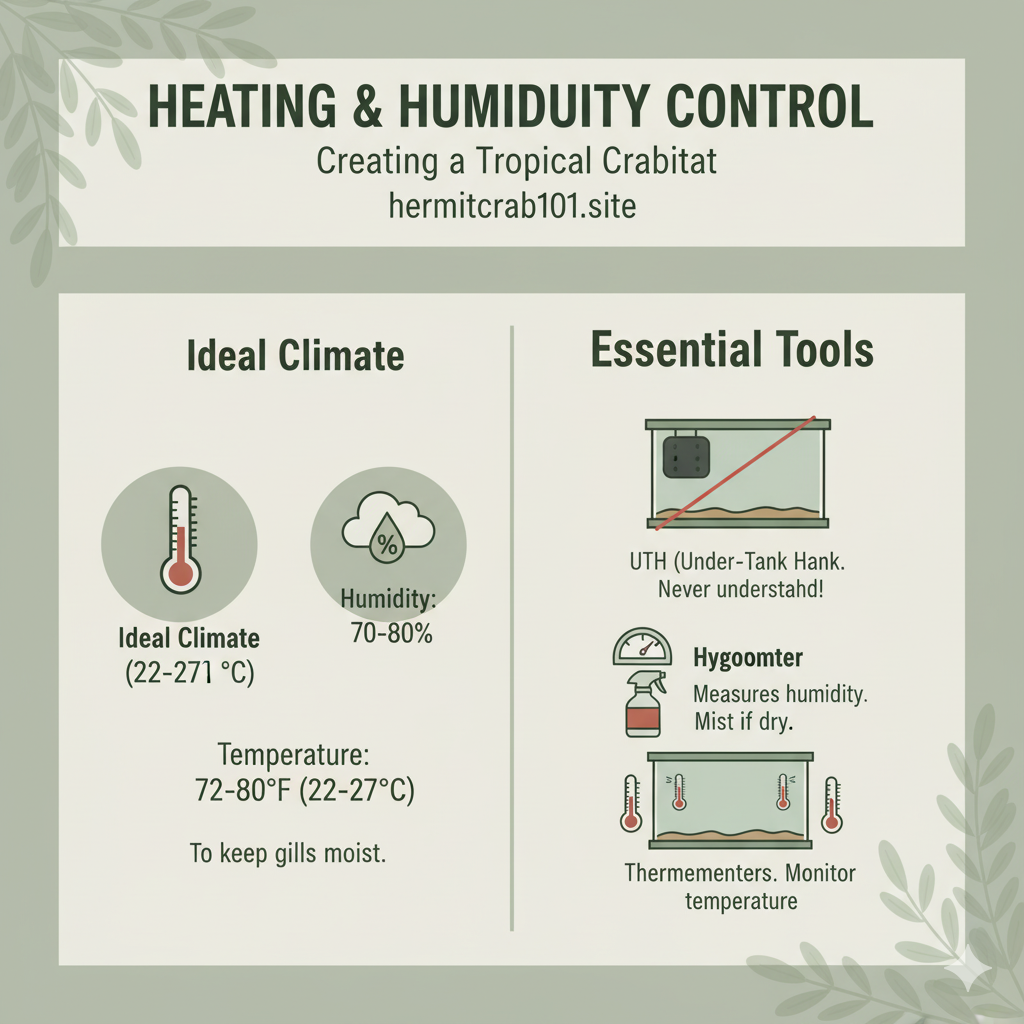
Hermit crabs are tropical animals, so they need the right climate to survive.
- Temperature: Keep the tank between 72-80°F (22-27°C).
- Humidity: Maintain 70-80% humidity to keep their gills moist.
Use these tools to maintain conditions:
- A UTH (under-tank heater) on the side or back of the tank (never under the bottom, as crabs dig deep).
- A hygrometer to measure humidity.
- A thermometer on each side of the tank to monitor temperature gradients.
If the air is too dry, mist the tank lightly with dechlorinated water.
Hiding Spots, Climbing Areas, and Enrichment
Hermit crabs are natural explorers. In the wild, they climb driftwood, hide in shells, and scavenge for food.
In your tank, provide:
- Cork bark, cholla wood, or natural rocks for climbing
- Half coconut shells or caves for hiding
- Extra shells in different sizes and shapes (avoid painted shells)
- Leaf litter and moss to mimic a natural environment
These features not only reduce stress but also encourage healthy, natural behaviors.
What Not to Put in a Hermit Crab Tank
Some items that seem safe may actually harm hermit crabs:
- Painted shells (paint chips can poison them)
- Metal decorations (they rust and release toxins)
- Sharp gravel or rocks (injury risk, poor burrowing ability)
- Chemical cleaners (always wash items with hot water, never soap)
Stick to natural, crab-safe materials whenever possible.
Common Beginner Mistakes to Avoid
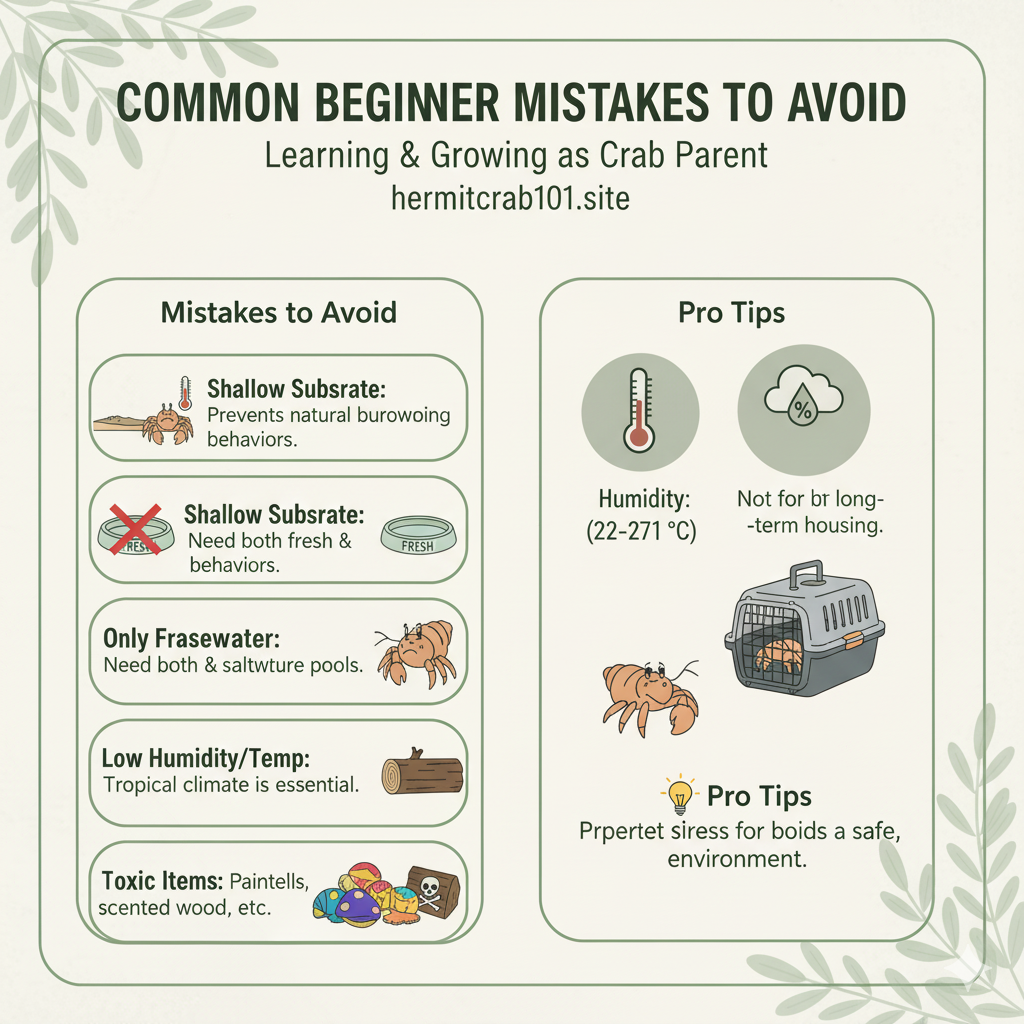
Setting up your first hermit crab tank can feel overwhelming, and mistakes are common. Here are some to watch out for:
- Using a shallow substrate that prevents burrowing
- Providing only freshwater but not saltwater
- Keeping crabs in a plastic carrier long term
- Forgetting to maintain humidity and temperature
- Using toxic items like painted shells or scented wood
Learning from these mistakes early will save you from stress-and save your crabs from harm.
FAQs About Hermit Crab Tank Setup
What is the proper hermit crab tank setup?
A 10-gallon or larger glass tank with sand/soil substrate, freshwater and saltwater pools, hiding spots, climbing structures, stable heat and humidity, and spare shells.
What do you put at the bottom of a hermit crab tank?
Fill it with 5-6 inches of moist sand or a sand/soil mix. This allows digging, burrowing, and safe molting.
What not to put in a hermit crab tank?
Avoid gravel, painted shells, metals, and anything treated with chemicals.
Do hermit crabs need sand or soil?
Yes. A mix of sand and soil is best for burrowing, humidity retention, and natural behavior.
Conclusion
Knowing how to set up a hermit crab tank is the foundation of responsible crab ownership. These little creatures aren’t low-maintenance “starter pets”-they need a carefully designed crabitat to survive and thrive.
By providing deep substrate, clean water pools, proper heat and humidity, safe climbing structures, and extra shells, you can give your hermit crabs a home that feels just like their natural shoreline.
With the right setup, your crabs won’t just survive-they’ll explore, grow, and keep you entertained for years to come.


